问题背景
在 进程内缓存中说到的是直接在进程进行缓存的自管理,一般应用于业务生成的自定义数据(多副本情况下可能存在缓存一致性问题)。而随着业务量的增加,利用Redis构建专门的数据缓存,加快数据库访问。
由于数据库数据的特点,那么这里就有几个实现需要注意的点
- 数据一致性
- 缓存击穿、穿透、雪崩
- 缓存访问量、缓存命中率
实现原理
源码注释:core/stores/cache
构建缓存对象
根据缓存节点配置构建一个缓存对象用于业务层进行缓存处理
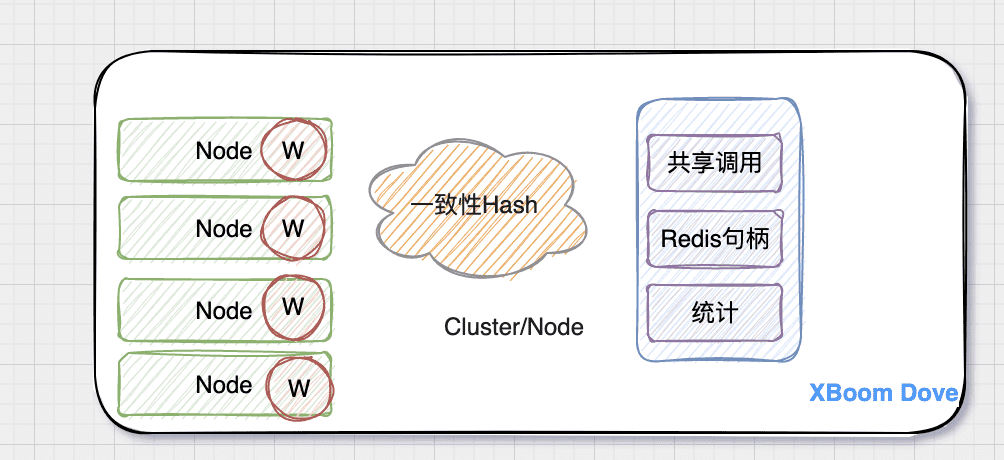 缓存支持通过多节点构建的缓存集群,也支持单个节点结构
缓存支持通过多节点构建的缓存集群,也支持单个节点结构
- 多节点缓存集群通过一致性Hash进行访问,这里的多节点是指多个无关的缓存节点。而每个缓存节点可能都是一个Redis集群
- 共享调用防止缓存击穿
- 统计将环中命中,DB查询等情况上报给外部
1
2
3
4
5
|
cacheCluster struct {
dispatcher *hash.ConsistentHash
errNotFound error
}
|
关于一致性Hash 在 《go-zero-一致性Hash》有说明
集群缓存操作
集群的缓存操作都是根据一致性Hash算法得出对应节点,然后演变成单节点的缓存操作
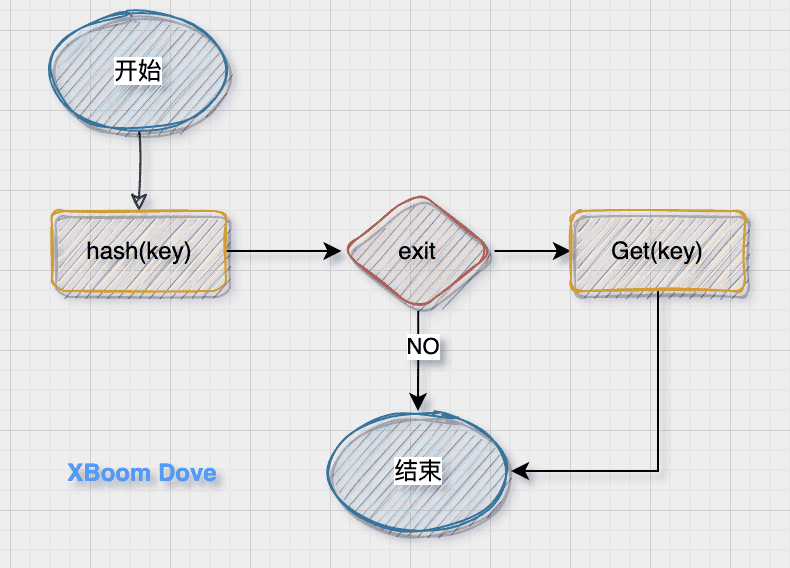
与单点不同的是,缓存集群批量删除Key,而Key有可能存在于多个节点上
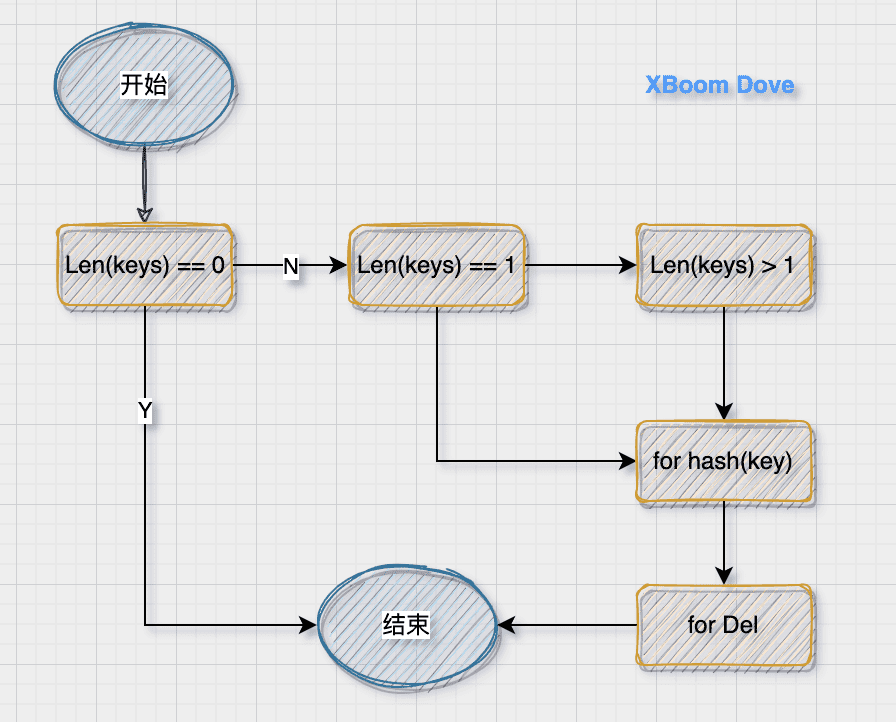
当keys数量大于1的时候,首先会 for Hash(Key) 找到所有的缓存节点,然后再通过 for del
- 单次映射
Hash节点或者删除Key并不会影响后续操作,而是通过 BatchError记录每一次错误
- 通过
make(map[interface{}][]string)保存节点与Key的关系
单点缓存操作
查询缓存
查询缓存的过程其实就是从Redis中获取数据的过程
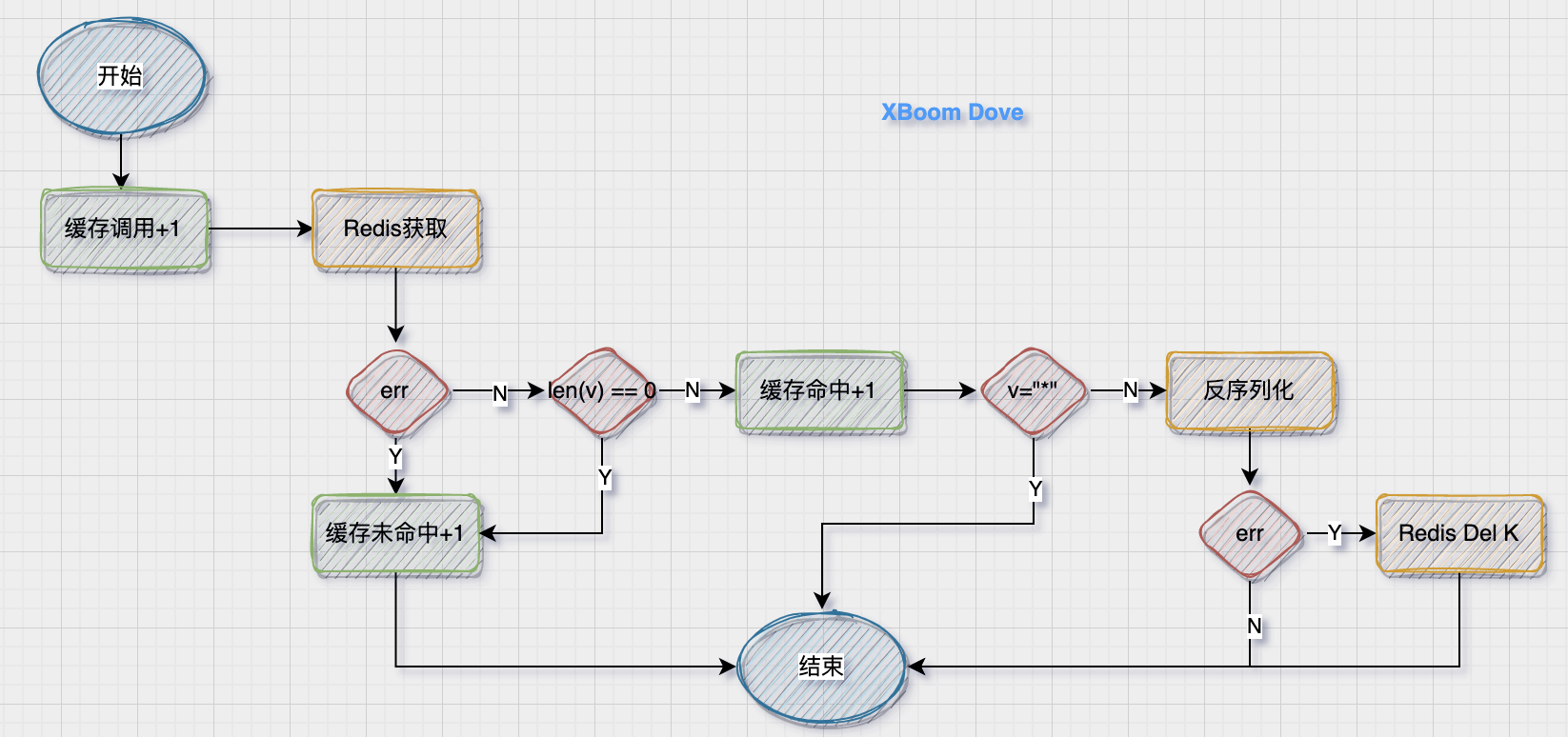
这里有两点需要注意
- 当加载数据完毕,有一个将结果与空占位符比较的过程
value = "*",是为了防止缓存穿透而故意设置的占位符。那么它是什么时候怎么插入的?
- 将结果反序列如果失败,那么会去Redis删除这个
Key,表示存储的缓存异常
设置缓存
设置缓存是直接按照redis语法设置 k/v 与 expire
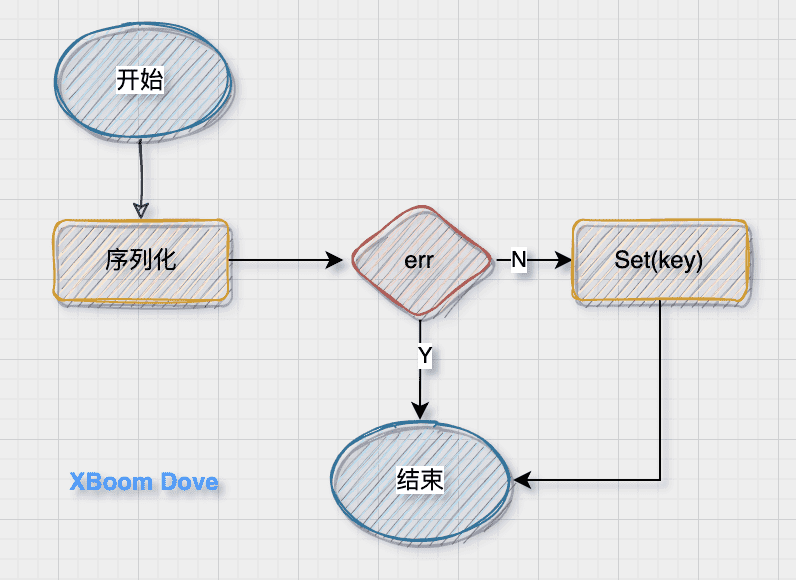
删除缓存
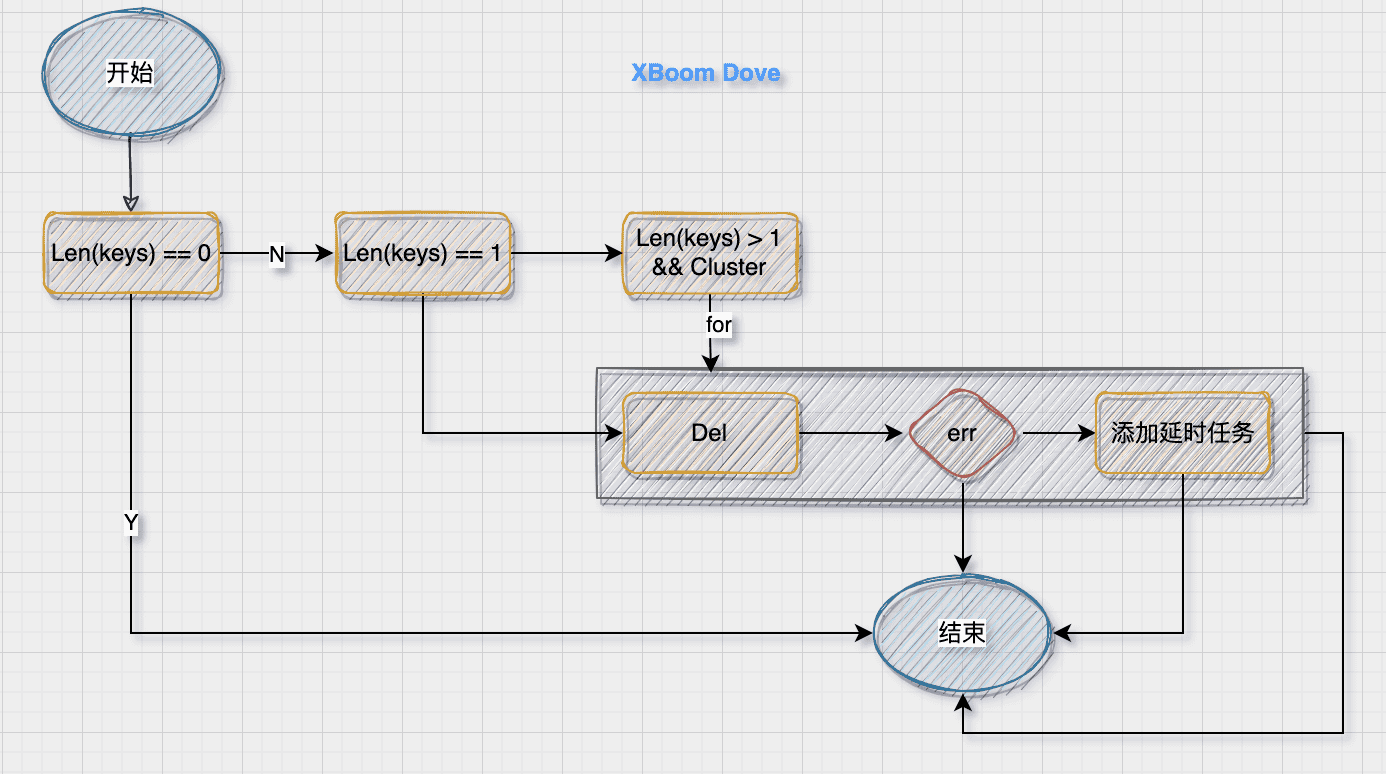
- 删除缓存时候,如果本身就是一个缓存集群,当对
keys进行批量删除的时候,需要依次删除每一个Key,而不是直接 del(keys...) 删除。
- 删除失败这里添加延时任务进行重试,但只会重试一次,失败后直接退出
获取缓存
获取缓存当缓存数据库没有的时候,就会直接从数据库加载并将数据保存到缓存数据库
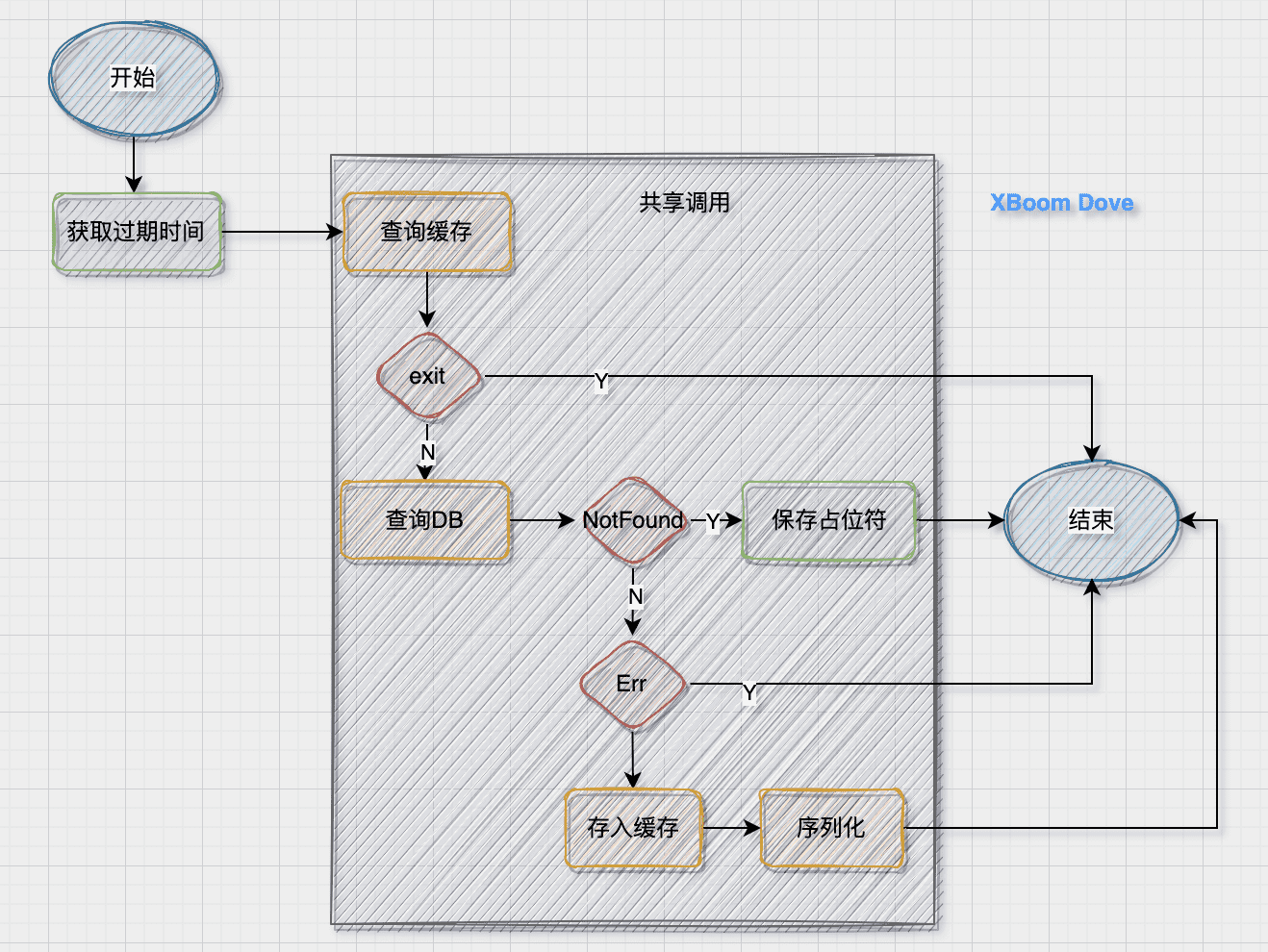
- 当缓存中没有且数据库中也没有的时候,那么这个时候就会设置占位符(防止缓存穿透),占位符的过期时间与普通的
Key一致
- 关于查询数据库操作,这里仅仅是将结果实体传入,由数据层进行数据加载
- 当缓存没有的时候,是先查询数据库,然后更新缓存
技术内幕
代码:core/stores/cache/cachenode.go
cacheNode 表示是单个缓存节点的对象
1
2
3
4
5
6
7
8
9
10
11
12
13
14
15
16
17
18
19
|
type cacheNode struct {
rds *redis.Redis
expiry time.Duration
notFoundExpiry time.Duration
barrier syncx.SingleFlight
r *rand.Rand
lock *sync.Mutex
unstableExpiry mathx.Unstable
stat *Stat
errNotFound error
}
const (
notFoundPlaceholder = "*"
expiryDeviation = 0.05
)
|
- 这里几个过期分别有什么作用
expiry:notFoundExpiry:unstableExpiry:
- 使用共享调用
barrier减少缓存调用
rand.Rand 的随机数
新建缓存节点
1
2
3
4
5
6
7
8
9
10
11
12
13
14
15
| func NewNode(rds *redis.Redis, barrier syncx.SingleFlight, st *Stat,
errNotFound error, opts ...Option) Cache {
o := newOptions(opts...)
return cacheNode{
rds: rds,
expiry: o.Expiry,
notFoundExpiry: o.NotFoundExpiry,
barrier: barrier,
r: rand.New(rand.NewSource(time.Now().UnixNano())),
lock: new(sync.Mutex),
unstableExpiry: mathx.NewUnstable(expiryDeviation),
stat: st,
errNotFound: errNotFound,
}
}
|
查询缓存
1
2
3
4
5
6
7
8
9
10
11
12
13
14
15
16
17
18
19
20
21
22
23
24
25
26
27
28
29
30
31
32
33
34
35
36
37
| func (c cacheNode) doGetCache(ctx context.Context, key string, v interface{}) error {
c.stat.IncrementTotal()
data, err := c.rds.GetCtx(ctx, key)
if err != nil {
c.stat.IncrementMiss()
return err
}
if len(data) == 0 {
c.stat.IncrementMiss()
return c.errNotFound
}
c.stat.IncrementHit()
if data == notFoundPlaceholder {
return errPlaceholder
}
return c.processCache(ctx, key, data, v)
}
func (c cacheNode) processCache(ctx context.Context, key, data string, v interface{}) error {
err := jsonx.Unmarshal([]byte(data), v)
if err == nil {
return nil
}
if _, e := c.rds.DelCtx(ctx, key); e != nil {
logger.Errorf("delete invalid cache, node: %s, key: %s, value: %s, error: %v",
c.rds.Addr, key, data, e)
}
return c.errNotFound
}
|
设置缓存
1
2
3
4
5
6
7
8
9
| func (c cacheNode) SetWithExpireCtx(ctx context.Context, key string, val interface{},
expire time.Duration) error {
data, err := jsonx.Marshal(val)
if err != nil {
return err
}
return c.rds.SetexCtx(ctx, key, string(data), int(expire.Seconds()))
}
|
获取缓存
获取缓存直接加载加载redis,并根据加载结果进行不同的处理
1
2
3
4
5
6
7
8
9
10
11
12
13
14
15
16
17
18
19
20
21
22
23
24
25
26
27
28
29
30
31
32
33
34
35
36
37
38
39
40
41
42
43
44
45
46
| func (c cacheNode) doTake(ctx context.Context, v interface{}, key string,
query func(v interface{}) error, cacheVal func(v interface{}) error) error {
logger := logx.WithContext(ctx)
val, fresh, err := c.barrier.DoEx(key, func() (interface{}, error) {
if err := c.doGetCache(ctx, key, v); err != nil {
if err == errPlaceholder {
return nil, c.errNotFound
} else if err != c.errNotFound {
return nil, err
}
if err = query(v); err == c.errNotFound {
if err = c.setCacheWithNotFound(ctx, key); err != nil {
logger.Error(err)
}
return nil, c.errNotFound
} else if err != nil {
c.stat.IncrementDbFails()
return nil, err
}
if err = cacheVal(v); err != nil {
logger.Error(err)
}
}
return jsonx.Marshal(v)
})
if err != nil {
return err
}
if fresh {
return nil
}
c.stat.IncrementTotal()
c.stat.IncrementHit()
return jsonx.Unmarshal(val.([]byte), v)
}
|
删除缓存
1
2
3
4
5
6
7
8
9
10
11
12
13
14
15
16
17
18
19
20
| func (c cacheNode) DelCtx(ctx context.Context, keys ...string) error {
if len(keys) == 0 {
return nil
}
logger := logx.WithContext(ctx)
if len(keys) > 1 && c.rds.Type == redis.ClusterType {
for _, key := range keys {
if _, err := c.rds.DelCtx(ctx, key); err != nil {
logger.Errorf("failed to clear cache with key: %q, error: %v", key, err)
c.asyncRetryDelCache(key)
}
}
} else if _, err := c.rds.DelCtx(ctx, keys...); err != nil {
logger.Errorf("failed to clear cache with keys: %q, error: %v", formatKeys(keys), err)
c.asyncRetryDelCache(keys...)
}
return nil
}
|
缓存统计
代码:core/stores/cache/cachestat.go
用于统计缓存情况
新建统计对象
1
2
3
4
5
6
7
8
9
10
11
12
13
14
15
16
17
18
19
20
21
22
23
24
25
26
27
28
29
30
31
|
func NewStat(name string) *Stat {
ret := &Stat{
name: name,
}
go ret.statLoop()
return ret
}
func (s *Stat) statLoop() {
ticker := time.NewTicker(statInterval)
defer ticker.Stop()
for range ticker.C {
total := atomic.SwapUint64(&s.Total, 0)
if total == 0 {
continue
}
hit := atomic.SwapUint64(&s.Hit, 0)
percent := 100 * float32(hit) / float32(total)
miss := atomic.SwapUint64(&s.Miss, 0)
dbf := atomic.SwapUint64(&s.DbFails, 0)
logx.Statf("dbcache(%s) - qpm: %d, hit_ratio: %.1f%%, hit: %d, miss: %d, db_fails: %d", s.name, total, percent, hit, miss, dbf)
}
}
|
注意:
- 协程是一个常驻协程,缺少退出
SwapUint64的作用是:将新的值写入 addr,而返回addr中旧的值
缓存清理
当缓存删除失败,这里添加一个重试机制
初始化
1
2
3
4
5
6
7
8
9
10
11
12
13
14
15
16
17
18
19
20
21
22
23
24
25
26
27
28
29
30
31
32
| func init() {
var err error
timingWheel, err = collection.NewTimingWheel(time.Second, timingWheelSlots, clean)
logx.Must(err)
proc.AddShutdownListener(func() {
timingWheel.Drain(clean)
})
}
func clean(key, value interface{}) {
taskRunner.Schedule(func() {
dt := value.(delayTask)
err := dt.task()
if err == nil {
return
}
next, ok := nextDelay(dt.delay)
if ok {
dt.delay = next
timingWheel.SetTimer(key, dt, next)
} else {
msg := fmt.Sprintf("retried but failed to clear cache with keys: %q, error: %v",
formatKeys(dt.keys), err)
logx.Error(msg)
stat.Report(msg)
}
})
}
|
这里做了一个动态清理
1
2
3
4
5
6
7
8
9
10
11
12
13
14
| func nextDelay(delay time.Duration) (time.Duration, bool) {
switch delay {
case time.Second:
return time.Second * 5, true
case time.Second * 5:
return time.Minute, true
case time.Minute:
return time.Minute * 5, true
case time.Minute * 5:
return time.Hour, true
default:
return 0, false
}
}
|
添加清理任务
1
2
3
4
5
6
7
8
|
func AddCleanTask(task func() error, keys ...string) {
timingWheel.SetTimer(stringx.Randn(taskKeyLen), delayTask{
delay: time.Second,
task: task,
keys: keys,
}, time.Second)
}
|
总结
- 采用共享调用的方式防止缓存击穿
- 采用占位符方式缓存床头
- 设置范围过期时间防止缓存雪崩
- 增加重试删除机制(时间轮)
参考链接
- https://talkgo.org/t/topic/1716
- https://talkgo.org/t/topic/1505
 缓存支持通过多节点构建的缓存集群,也支持单个节点结构
缓存支持通过多节点构建的缓存集群,也支持单个节点结构




